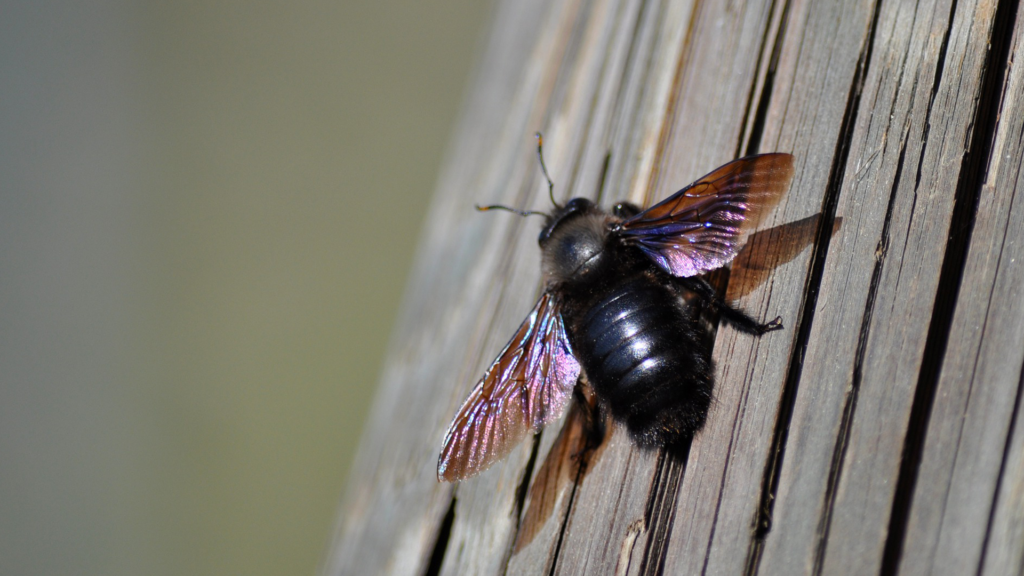In New England alone, there are about 400 different bee species, so it’s tough for the average person to differentiate them. Because they can provide a threat to local structures, we wanted to introduce you to the carpenter bee and provide some signs that you may have a problem on your property.
Wood Tunnels
Unlike termites, which eat wood, carpenter bees bore tunnels through wood to lay their eggs. As the weather warms, the bees emerge from hibernation to mate. Once fertilized, female bees seek out soft, weathered, unpainted wood (like redwood, cedar, pine and cypress) to make a tunnel to lay their eggs.
They bore into the wood and create individual cells for each egg (usually five or six), leaving behind pollen as a food source for the larvae. Later in the summer, the new adult bees emerge from the tunnels and live amongst the flowers and plants. As cool weather arrives, the bees return to the tunnels to overwinter and begin the cycle again.
The immediate threat to local structures is not as great as with termites or carpenter ants, but the work of carpenter bees takes a toll over time. While they don’t form colonies as other species do, they do tend to create their tunnels near each other, which means if you spot one tunnel, there are likely more. They also return to the same areas annually, boring new tunnels or reusing existing tunnels, going further and further into the wood each time. Over time, the tunnels can grow as long as ten feet. In addition to the damage done by the carpenter bees themselves, the tunnels they create in the wood can serve as an access point for moisture, rot and other harmful pests.
Signs of Carpenter Bees
Here’s what to look for:
- Perfectly round holes about a half-inch in diameter, sometimes with sawdust below the opening.
- Large, black bees hovering around wooden areas on eaves, windowsills, fences, roofs and more. Carpenter bees are the largest bee species in the U.S. (aside from the queen bumblebee), ranging in size from a quarter-inch to an inch long. They have shiny, black, hairless abdomens.
- Woodpeckers, which often try to get at the larvae. If you spot the birds pecking at your home, deck or other structures, it can be a sign you have carpenter bees.
Carpenter Bee Treatment
Because carpenter bees play a key role in pollination, which is essential for local plant life, we focus our efforts on repelling them versus exterminating them. We’ll complete an inspection to verify you have carpenter bees and customize a control plan.
While they can look intimidating, male carpenter bees do not have a stinger and pose no threat to people. Females can sting but rarely do so unless provoked. Still, if you have signs of damage from carpenter bees, it’s best to request professional treatment.

